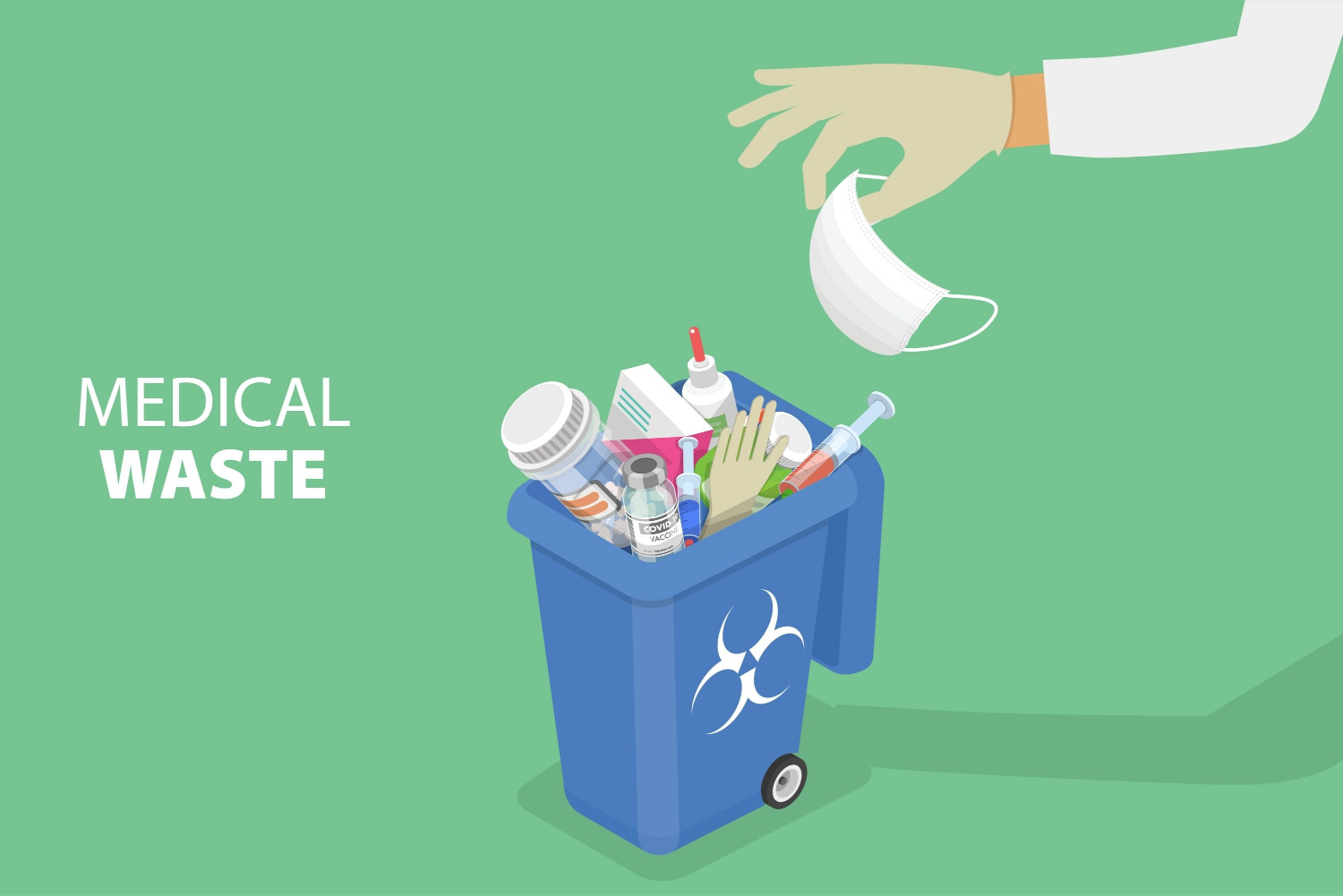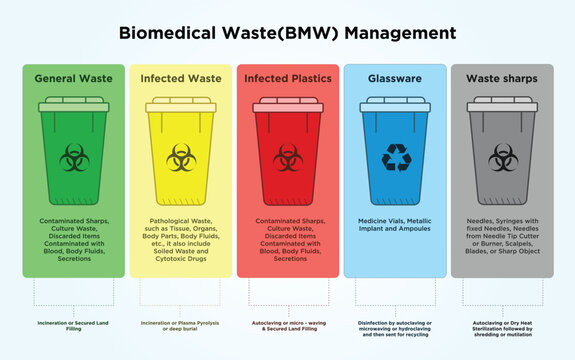Tailored Medical Waste Disposal Service: Meeting Healthcare Conformity Requirements
Wiki Article
Ideal Practices for Medical Waste Monitoring
Medical waste monitoring is a critical element of health care centers' procedures to make sure the safety of people, personnel, and the setting. Applying ideal techniques in clinical waste monitoring is necessary to reduce the risks related to contaminated materials. This includes proper partition and classification of waste, guaranteeing its secure storage space and labeling, adhering to regulatory guidelines, and making use of reliable disposal techniques. By complying with these finest practices, medical care facilities can decrease the capacity for infections, injuries, and contamination triggered by improper handling and disposal of clinical waste. This intro intends to supply an introduction of the value of finest practices for clinical waste administration and the subsequent areas will certainly look into each technique carefully.Partition and Categorization
In the area of clinical waste administration, correct partition and classification are important techniques for making sure the reliable and risk-free disposal of healthcare-related products. Medical waste is created from various sources, consisting of healthcare facilities, facilities, research laboratories, and other healthcare centers. It contains a variety of products, such as needles, syringes, plasters, gloves, and pharmaceutical waste.Partition includes the methodical separation of different sorts of clinical waste based upon their attributes and potential dangers. This procedure aids to avoid cross-contamination and makes certain that each kind of waste is managed suitably. For instance, sharps waste, such as blades and needles, ought to be put in puncture-resistant containers to avoid injuries and the spread of infectious illness. Similarly, infectious waste, such as blood-soaked bandages or cultures, ought to be segregated and treated individually to lessen the threat of spreading out microorganisms.
Classification is the procedure of identifying clinical waste into different categories based upon its possible dangers. WasteX Medical Waste Disposal. These categories may consist of contagious waste, dangerous waste, pharmaceutical waste, and basic waste. By classifying waste, health care centers can determine the ideal disposal approaches and ensure compliance with local regulations and standards
Proper partition and categorization of medical waste not just protect the health and wellness and security of healthcare employees and the general public yet also add to the general performance and efficiency of waste management. It lowers the danger of mishaps, reduces ecological effects, and advertises responsible garbage disposal practices.
Appropriate Storage Space and Labeling
To make certain the efficient and risk-free disposal of clinical waste, healthcare centers must comply with correct storage and labeling techniques. Proper storage and labeling play a vital role in preserving the honesty of medical waste administration systems and shielding the health and wellness of health care employees, patients, and the public.When it involves storage, it is necessary to have actually designated areas specifically created for different kinds of medical waste. These areas need to be safe, well-ventilated, and outfitted with suitable containers that satisfy governing criteria. Partition and categorization of waste ought to likewise be thought about to avoid cross-contamination and prospective threats.
Furthermore, proper labeling is important for efficient waste administration. Each container must be plainly classified with the ideal icons, color-coding, and details concerning the waste it has. Tags need to consist of information such as the kind of waste, date of collection, and the name of the generator. This makes sure that all individuals dealing with the waste can quickly recognize and manage it correctly.
Routine monitoring and inspection of storage space areas and containers are necessary to recognize any kind of problems or violations. Team must be trained on correct storage space and labeling practices, stressing the relevance of compliance with procedures and regulations.
Safe Transport and Handling
Making sure the appropriate and secure transport and handling of clinical waste is vital for preserving the honesty of waste administration systems and safeguarding the wellness and security of all entailed. Medical waste, which consists of products infected with contagious products, drugs, and other unsafe compounds, have to be delivered in a manner that stops leakages, spills, and prospective contamination.To attain risk-free transport and handling, several ideal methods need to be complied with. It is necessary to make use of leak-proof and puncture-resistant containers that are especially developed for clinical waste. These containers need to be correctly secured and classified to stop any type of unintended exposure or mishandling. In addition, waste must be set apart based upon its nature and type to avoid cross-contamination.
Throughout transportation, it is necessary to ensure that waste containers are securely fastened and kept in a secure fashion. Autos made use of for transferring medical waste ought to be geared up with suitable security functions, such as spill control systems, to lessen the danger of any type of leaks or spills (medical waste disposal service). Motorists must get training on proper handling and emergency response procedures to effectively attend to any kind of unpredicted events
In addition, the transportation and handling of medical waste should adhere to all pertinent laws and guidelines established forth by neighborhood, state, and government authorities. Normal inspections and audits ought to be carried out to evaluate compliance and recognize any kind of areas for improvement.

Conformity With Regulatory Guidelines
Preserving compliance with governing guidelines is important for reliable clinical waste monitoring. These standards are placed in location to safeguard public wellness and the atmosphere by guaranteeing that clinical waste is correctly dealt with, dealt with, and disposed of. medical waste removal service. Compliance with governing guidelines helps to avoid the spread of contagious conditions, lessen prospective threats, and reduce the overall impact of medical waste on the atmosphereTo achieve conformity, healthcare facilities need to stay informed about the certain regulations controling medical waste management in their jurisdiction. These regulations may vary from nation to country, and also within various states or regions. It is crucial for health care facilities to have a comprehensive understanding of these standards and to execute proper techniques and procedures to make sure compliance.
One trick aspect of compliance is the correct segregation and labeling of various sorts of medical waste. This includes separating sharps from various other waste, in addition to categorizing waste based upon its possible threats. Healthcare centers should additionally ensure that clinical waste is saved in proper containers which these containers are properly labeled and secured.
Moreover, compliance with governing standards requires health care centers to develop appropriate training and education programs for team members entailed in medical waste monitoring - WasteX Medical Waste Disposal. This includes giving training on waste segregation, taking care of, and disposal procedures, along with the correct use of individual safety devices
Routine surveillance and audits are likewise vital to make sure continuous compliance with governing standards. This entails performing routine examinations of waste storage areas, recording waste monitoring procedures, and preserving documents of waste disposal.
Effective Disposal Techniques
Healthcare facilities should utilize effective disposal techniques for correct monitoring of medical waste - WasteX Medical Waste Disposal. Improper disposal of clinical waste can posture significant health and ecological risks. There are numerous approaches that can be utilized to successfully throw away medical waste, ensuring the safety of healthcare workers, patients, and the publicOne typically utilized approach is incineration. Burners can safely shed clinical waste at heats, lowering the volume and damaging any kind of possibly hazardous pathogens. Nevertheless, incineration can be expensive and might launch harmful toxins into the air if not correctly controlled.
One more approach is autoclaving, which involves subjecting the waste to high-pressure steam. This process eliminates bacteria, infections, and various other bacteria, making the waste risk-free for disposal in normal waste streams. Autoclaving is a eco friendly and reliable technique, yet it calls for specialized devices and trained workers.
Chemical sanitation is likewise made use of in some instances, where fluid chemicals are put on the waste to sanitize it. This technique is less typically utilized as a result of problems about the effectiveness of chemical disinfection and the capacity for chemical residues to infect the atmosphere.
In addition to these approaches, health care centers must likewise carry out proper segregation, product packaging, and labeling of medical waste to guarantee its risk-free handling and disposal. Normal training and education and learning of team on proper waste management methods are crucial to keeping effective disposal methods.
Conclusion

Medical waste management is an important element of healthcare facilities' procedures to ensure the safety and security of clients, team, and the environment. Applying ideal practices in clinical waste monitoring is important to minimize the risks connected with dangerous waste. These classifications may consist of transmittable waste, dangerous waste, pharmaceutical waste, and general waste.In conclusion, carrying out finest practices for clinical waste administration is essential for ensuring the safety and security of healthcare workers, clients, and the setting. By effectively classifying and segregating waste, storing and identifying it properly, making sure safe transportation and handling, conforming with regulatory standards, and utilizing efficient disposal methods, health care centers can successfully take care of and minimize the risks associated with medical waste.
Report this wiki page